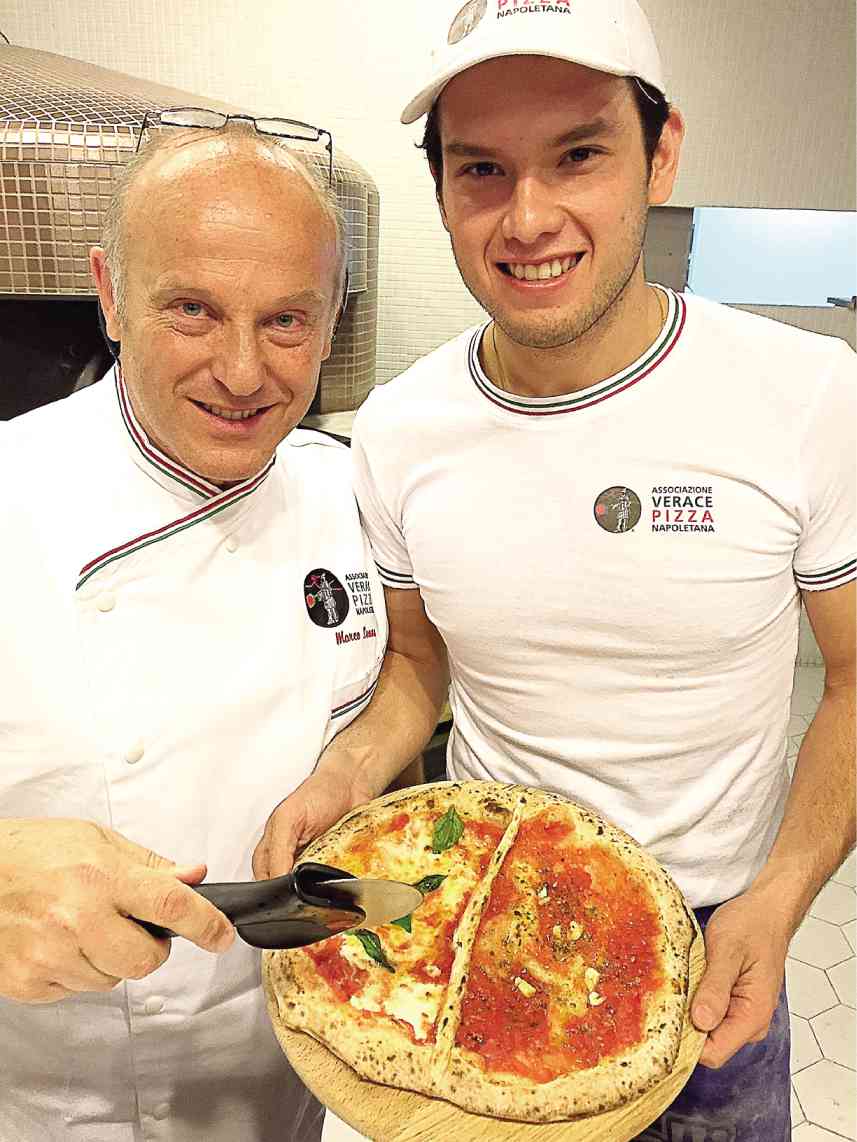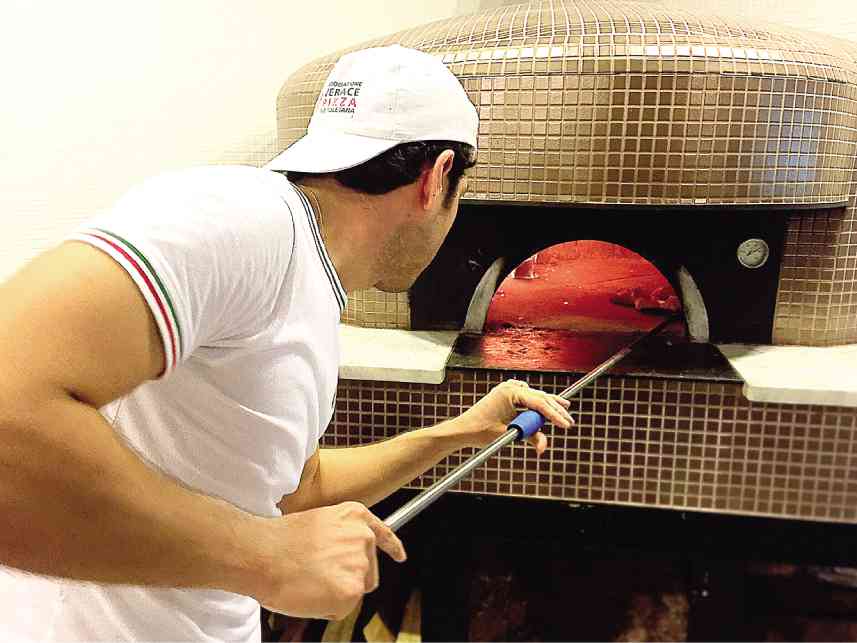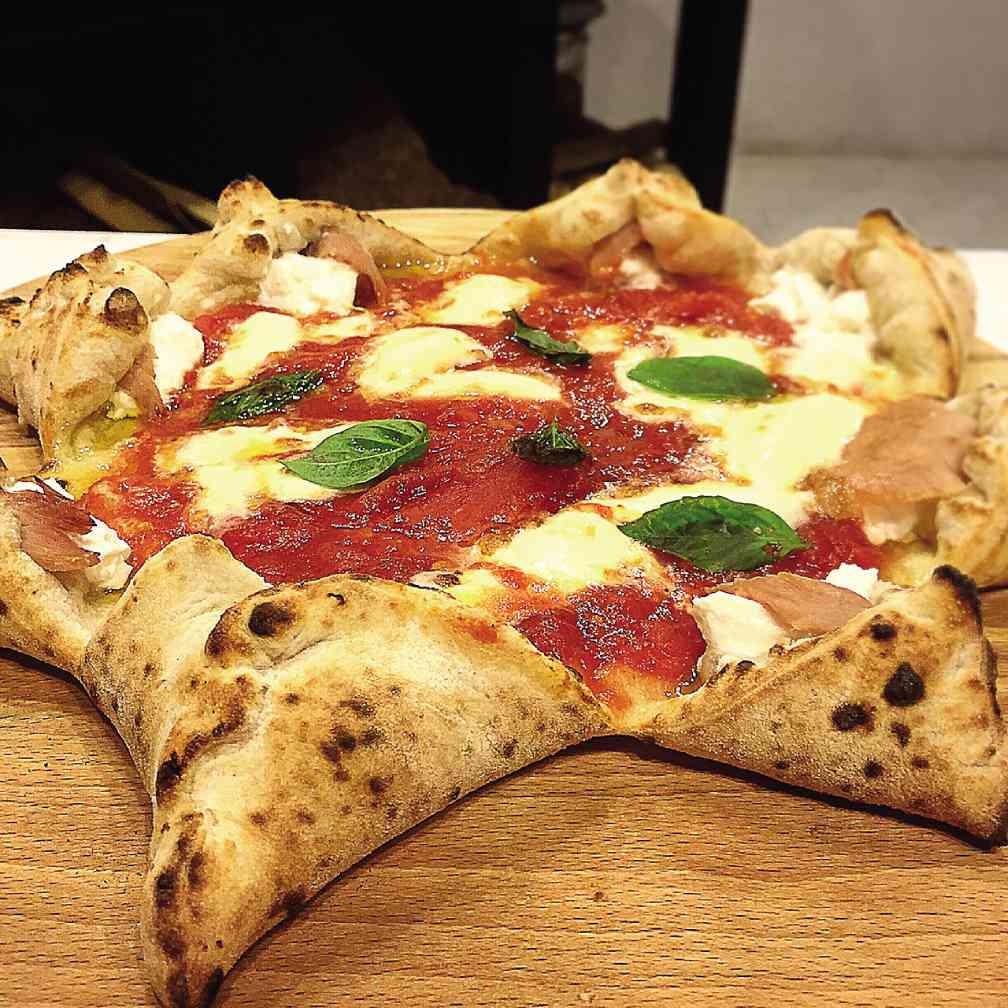Falling in love with pizza Napolitana
“This is pizza margherita in Napoli. It is your moral imperative to eat and enjoy that pizza,” said a perplexed Julia Roberts to her friend in the movie Eat, Pray, Love as she devoured a pizza Napolitana at Da Michele, one of the oldest and most established pizzerias in Naples.
“I’m in love,” Roberts’ character concluded. “I’m having a relationship with my pizza.”
This may sound snobbish but even if you think you know what she’s talking about as you enjoy other kinds of pizzas from around the world or around the country, you really don’t until you have a taste of real Napolitan pizza.
At least that is how I felt when I had my first bite at La Nostra Pizzeria Napolitana, the first certified Napolitan pizzeria in the Philippines. “Now you know,” said Marco Leone, the Napolitan pizza maestro who was in the Philippines the first time I tried this pizza.
Unfortunately for Metro Manileños, La Nostra is not in this part of the country. It is located in Streetscape Mall (more like a strip of restaurants, really, rather than a mall) on Maria Luisa Road in Cebu.
Article continues after this advertisementPizzaiolo
Article continues after this advertisementMichael Cancio, who is just fresh out of college, decided that his calling is to make pizzas. It was probably inspired by the fact that his uncle, Tony Cancio, has been obsessed with trying to find and make the perfect pizza. So into the craft was Tony that he had a pizza oven custom-built (by Mark Cancio, Mike’s dad) for his farmhouse with wife Mariela in Tagaytay.
In a feeble attempt to force this couple to share their pizza with the public, I wrote about it in the Inquirer a few years ago and was happy to share months later the delightful news that Cafe Breton started serving Tony’s pizza. I was so obsessed with the perfectly crusted pizza that I dragged my friends to this Magallanes branch that offered it every Sunday after church (until they had a problem with their vent).
But Michael has upped the ante on pizza-making. The determined young man enrolled in a pizza school in Naples to learn how to churn pizza the proper way. He recalls that there were only 10 of them in his class and they would literally be required to make 50 pizzas a day just to learn how to properly make dough; and then they also trained as “fornaio” or the person who shoves the pizza in the oven. Michael then worked in three legendary Napolitan pizzerias after to train further in pizza-making.
It was during his training in Naples that Michael met Marco Leone, the pizza master (or maestro) of L’Associazone Vera Pizza Napoletana (or Associazone Verace Pizza Napoletana), who travels the world to inspect pizzerias and certify which ones in fact serve real Neapolitan pizza. Leone, for the first time, agreed to teach a course at the pizza university (there is such a thing) that Michael enrolled at. The studious student captured the heart of his mentor and when Michael invited Marco to Cebu to help him set up the first ever certified Neapolitan pizzeria in the Philippines, Leone agreed.
Leone even stayed in Cebu for a few months to personally guide Michael in opening La Nostra. Each ingredient in this new pizzeria was hand-picked by both Leone and Michael.
Pizza Napolitana
The stringent measures were taken because, apparently, not any pizza with soft dough can be called Napolitana (or, as the Italians spell it, Napoletana) pizza.
First, there is a specific flour that must be used: wheat flour that is “Type 00” or “Farino de Grano Tenero Tipo 00” which is “Vera Pizza Napoletana approved.” This approval signifies that the flour can create the texture of the dough that is distinct for Neapolitan pizza.
Then there is a specific technique or mixture in creating the pizza dough that in La Nostra only Michael knows. So not even Tony Cancio can mimic this in Cafe Breton! And it must be done only by hand. Michael comes in early every day to personally make these balls of dough for the pizza, as he was taught by Leone.
The ingredients to be used for the toppings of the pizza are also required to be of top quality and fresh. In Naples, they prefer Marzano or Pomodorini tomatoes and mozzarella with the DOP seal. In Cancio’s pizzeria, they import DOP-certified tomatoes although they use cow’s mozzarella from Bacolod that passed the critical standards of Leone himself. They also only use extra virgin olive oil.
But most important of all is the oven. To achieve the texture of Neapolitan pizza dough—which is just slightly charred outside and soft without being moist—the pizza must be eased into the oven that has an extremely high temperature of around 500 degrees (480-500 degrees centigrade). Then the pizza will be cooked literally in a minute or between 60 to 90 seconds to achieve “the leopard-looking crust,” as Michael describes it.
This cannot be achieved with just any oven. Even Mark Cancio, who designed the oven in Tony’s farmhouse in Tagaytay, admitted that while they tried to copy the Neapolitan ovens, the result was inconsistent.
The use of wood is also crucial. Dean and Deluca in Rockwell uses the Type 00 dough but its oven is gas-fired and you can taste it. So Michael bargained with father Mark Cancio to invest in a real Neapolitan-certified oven that was fabricated in Naples and shipped to Cebu. This Acunto Napoli oven allows the intensive heat, meets the requirements of a certain balance of temperatures inside and allows Michael to cook the pizza with wood instead of gas to consistently achieve the texture and quality of real Napolitan pizza. (If you want wood-fired pizza in Manila, try Gino’s Brick Oven in Salcedo Village or Katipunan; or—when the mall finally fixes their vents—Cafe Breton in Magallanes.)
Finally, to be called real Neapolitan pizza, you must be certified by the L’Associazone Vera Pizza Napoletana, an organization whose mission is to promote and protect the product that is Neapolitan pizza or “verace pizza napoletana.” The good news is that Michael’s La Nostra Pizzeria Napolitana in Cebu is receiving its official certification this very week!
Naples in Manila
Neapolitan pizza is generally pizza margherita (tomato-based with mozzarella) or pizza marinara (tomatoes, olive oil, garlic, oregano). But at La Nostra, of course they added Michael’s own creations. Among the favorites today are the Vera pizza and the Nutella pizza (who can resist pizza and chocolate?).
Michael has also created Pizza d’ Attilio, which he learned to make in one of the pizzerias he trained at. It is a unique pizza where the ends do not follow the circle but are stuffed (kind of like a stuffed-crust pizza of Pizza Hut but Napoli-style!). It is really filling and unique!
But whatever pizza you choose to order at La Nostra, you will really feel like you were transported to Naples. The dough is just exceptional with that gently charred crust, soft yet not gooey texture and distinct fragrance. And the toppings make you come alive with each bite because of the freshness of the ingredients.
Just like Julia Roberts in Eat, Pray, Love, you will fall in love and totally have a relationship with this pizza!! Let’s pray they branch out to Manila soon!
La Nostra Pizzeria Napolitana
Streetscape Mall, Maria Luisa Road, Banilad, Cebu. Open for dinner Tuesday to Sunday; open for lunch Saturday and Sunday. Closed Mondays.
More details in margauxsalcedo.com. Follow the author: @margauxsalcedo on Twitter, Facebook, Instagram.


